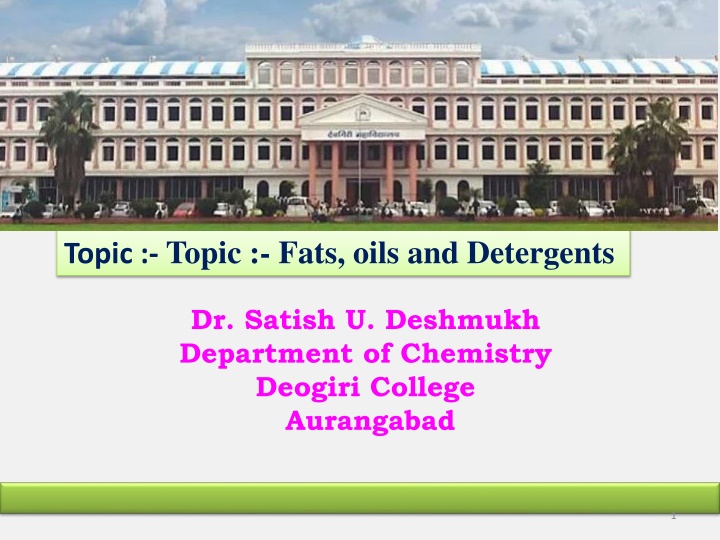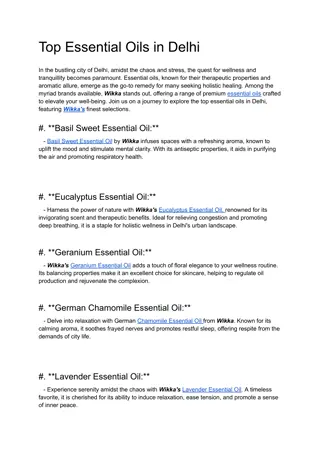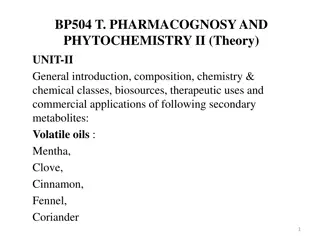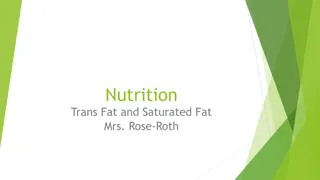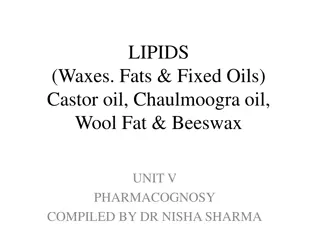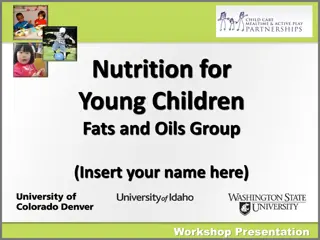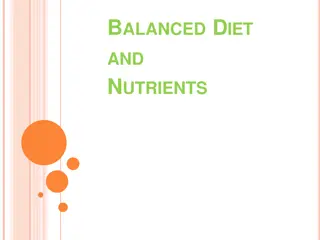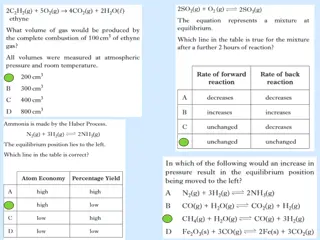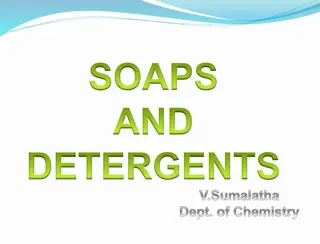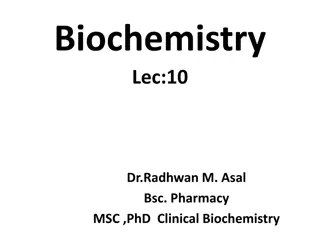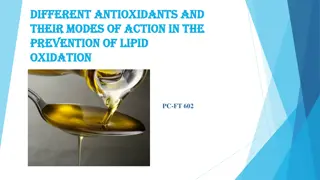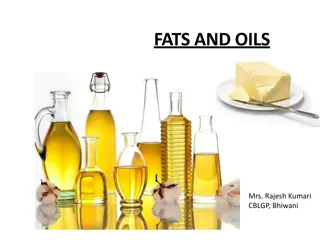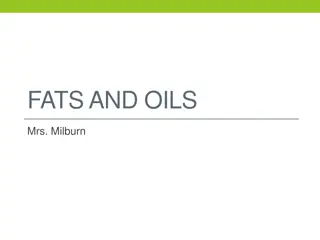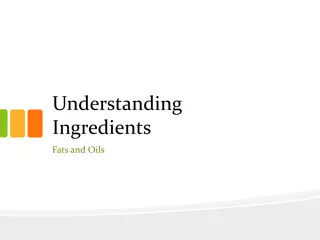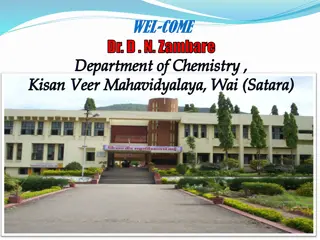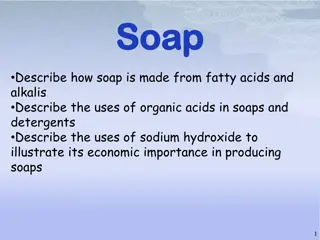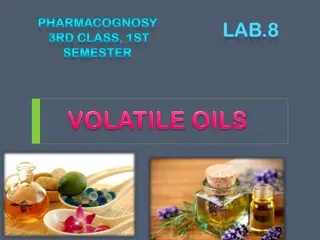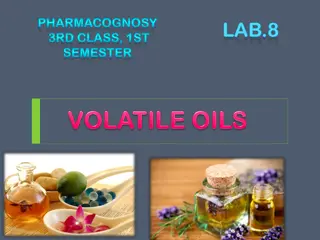Fats, Oils and Detergents: Essential Nutrients and Chemical Structures
Fats and oils, known as triglycerides, play a crucial role as an ideal energy source and are essential for human nutrition. This content delves into the differences between fats and oils, their structures, types of fatty acids, and why some are solids while others are liquids. Learn about saturated, monounsaturated, polyunsaturated, and trans fats, along with their sources, properties, and importance in our diet.
Download Presentation

Please find below an Image/Link to download the presentation.
The content on the website is provided AS IS for your information and personal use only. It may not be sold, licensed, or shared on other websites without obtaining consent from the author.If you encounter any issues during the download, it is possible that the publisher has removed the file from their server.
You are allowed to download the files provided on this website for personal or commercial use, subject to the condition that they are used lawfully. All files are the property of their respective owners.
The content on the website is provided AS IS for your information and personal use only. It may not be sold, licensed, or shared on other websites without obtaining consent from the author.
E N D
Presentation Transcript
Topic :- Topic :- Fats, oils and Detergents Dr. Satish U. Deshmukh Department of Chemistry Deogiri College Aurangabad 1
Fats, oils and Detergents Fats and oils are triglycerides compounds Fats and oils are stable & essential ideal source for storing energy Meaning is triesters of glycerol Triglycerides are more commonly called fats 1) Oils = liquids 2) Fats = solids Fats are micro nutrients required by human beings Most triglycerides derived from mammals fats and animals fats are such as Pork, Beef In plants triglycerides are commonly oils = soybean oil, sunflower oils , peanut oil, olive oil, cotton seed oil. Cold-blooded animals = fish oil. fats are solids at room temperature for examples butter, cheese, peanuts 2
Fats, oils and Detergents The fatty acids of common triglycerides are long consist of 12 to 20 carbon straight chain carboxylic acids ( COOH) and which are simple and geometrical isomers means carbon carbon double bond and some are saturated Fat = Glycerol + Fatty Acids Structure of Fats and Oils 3
Fats, oils and Detergents There are two types of triglycerides : Simple triglycerides, in which all three fatty acids are 1) Identical 2) Mixed glycerides 4
Fats, oils and Detergents Why these are triglycerides solids (fats) and others liquids (oils)? clear from their consistent Oils contain a more number of unsaturated fatty acids than fats. For example, most vegetable oils soybean oil 80 % unsaturated acids on hydrolysis a For fats the % of unsaturated acids are about 50 %. Melting Points = 72 C 5
Fats, oils and Detergents Four types of fats: 1) Saturated 2) monounsaturated 3) Polyunsaturated 4) Trans 1) Saturated fat is a type of fat in which the fatty acid chains contain have all most carbon carbon single bond or more number of carbon carbon single bonds. For example = Coconut oil 2) Monounsaturated fat is a type of fat in which the fatty acid chains contain one carbon carbon double bond For example = Olives and olive oil 7
Fats, oils and Detergents 1) Polyunsaturated fats is a type of fat in which the fatty acid chains contain more than one carbon carbon double bond or more number of carbon carbon double bonds. For example = Omega 3 and Omega 6 fats. Omega 3 Sunflower oils are all high in omega 6 2) Trans fats is a type of fat in which the s fatty acid chains contain one trans carbon carbon double bond For example = Microwave popcorn, Fried foods 8
Fats, oils and Detergents Thank you 9
